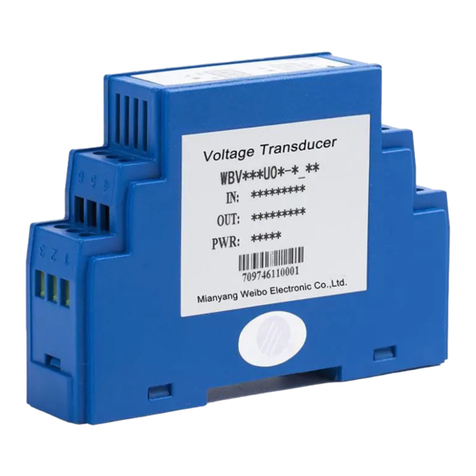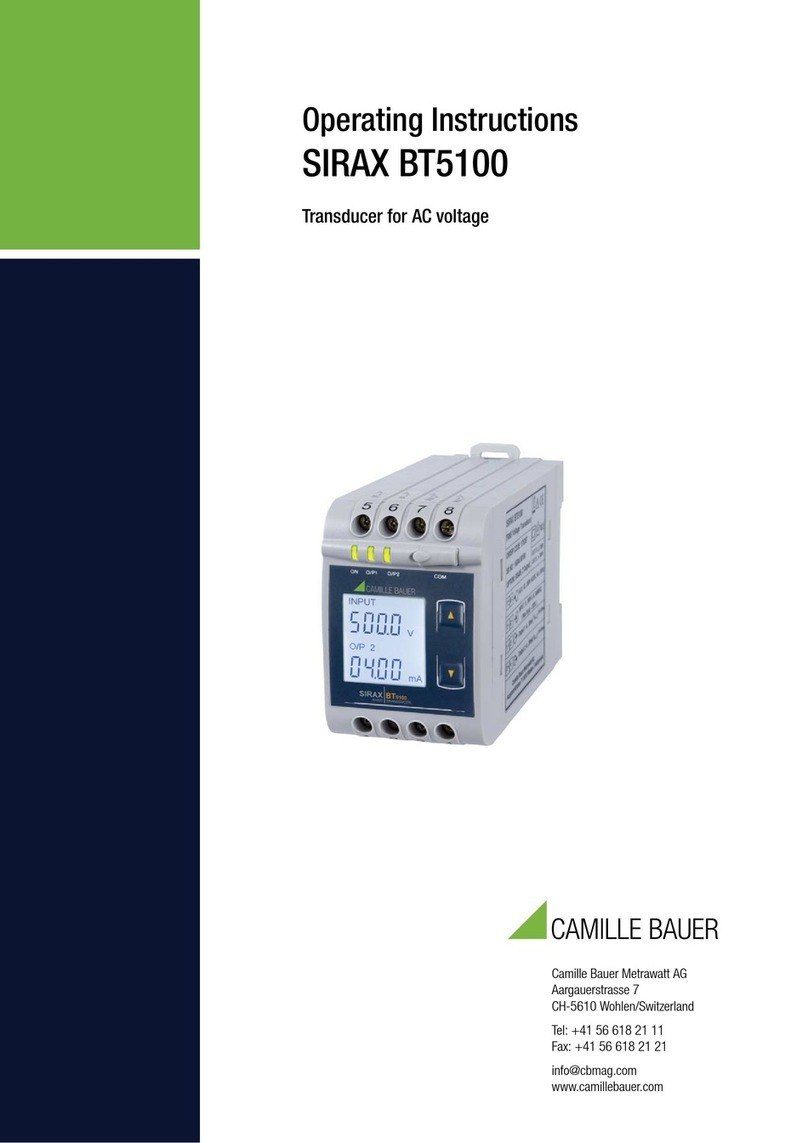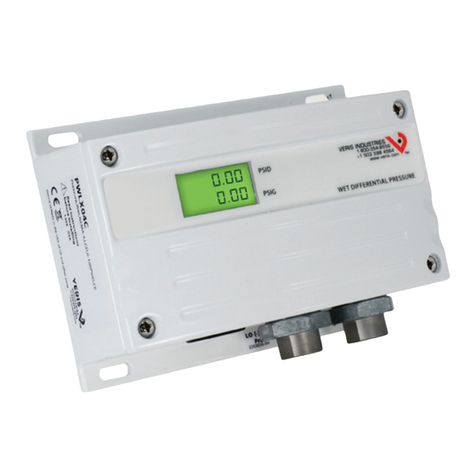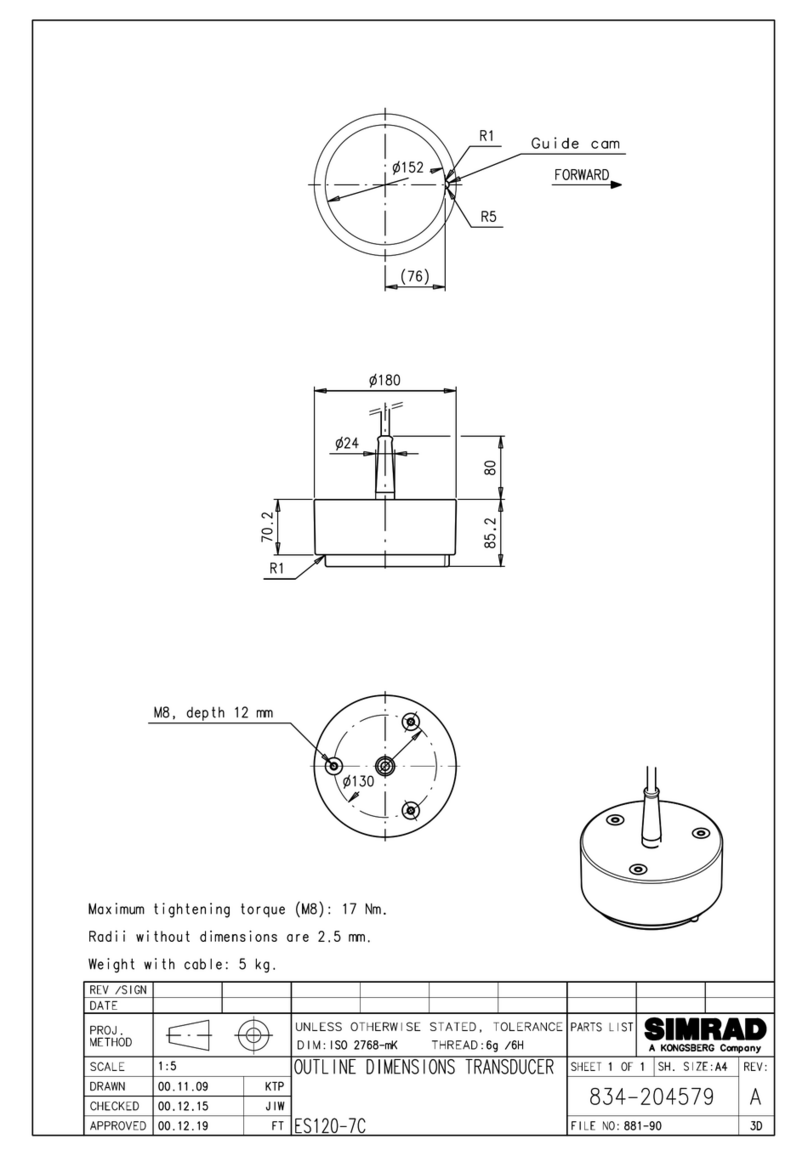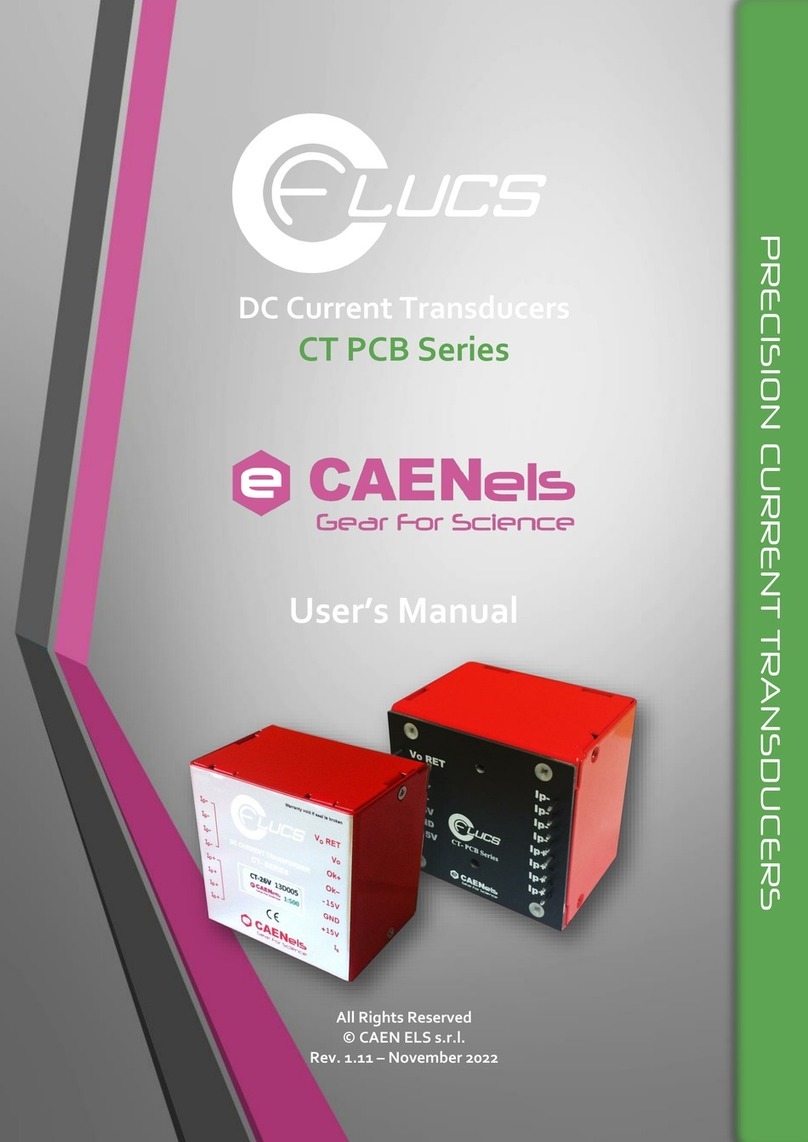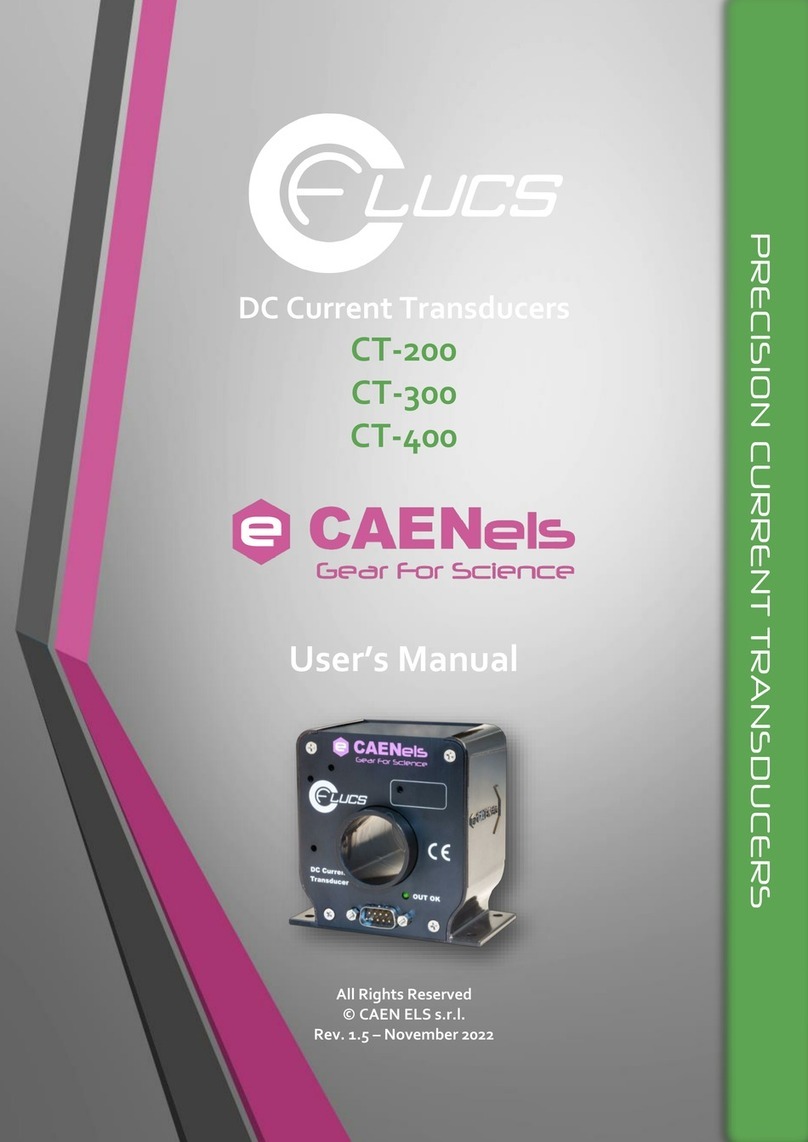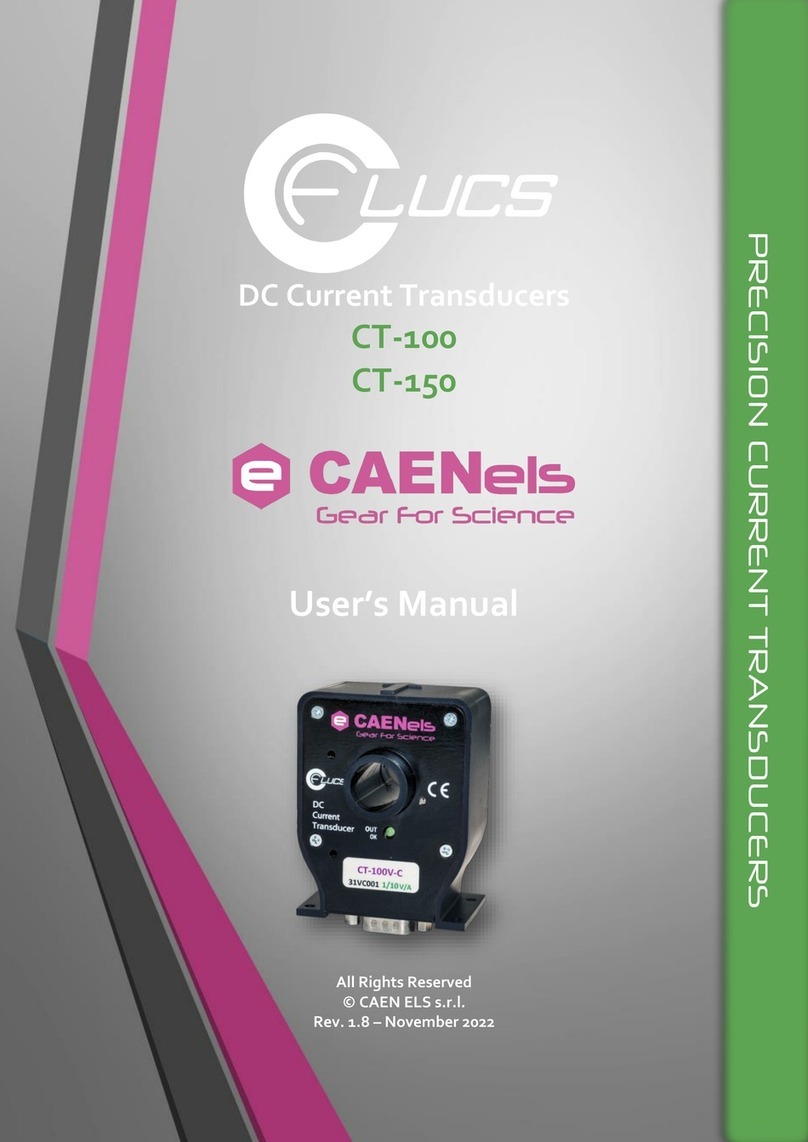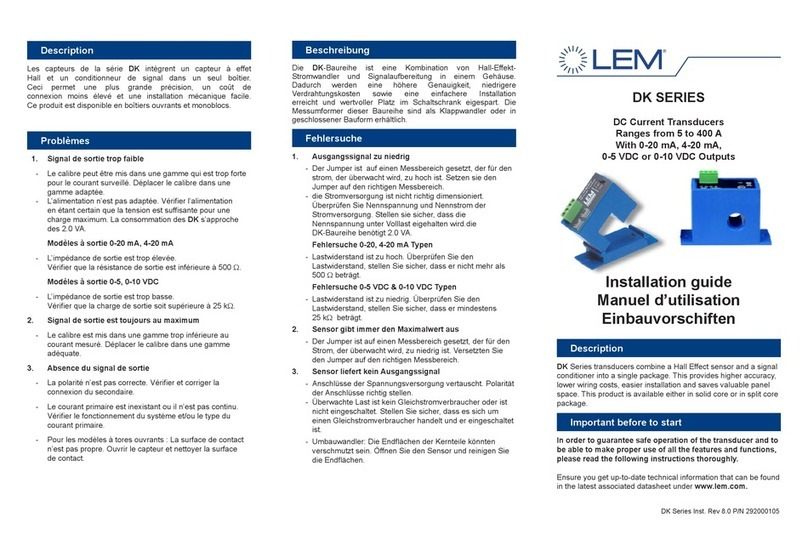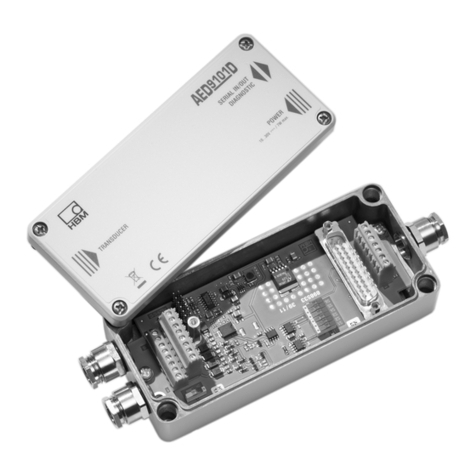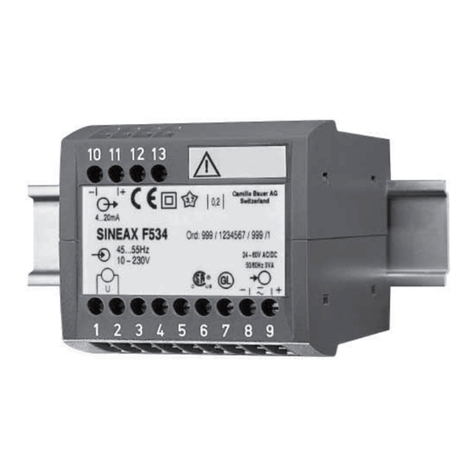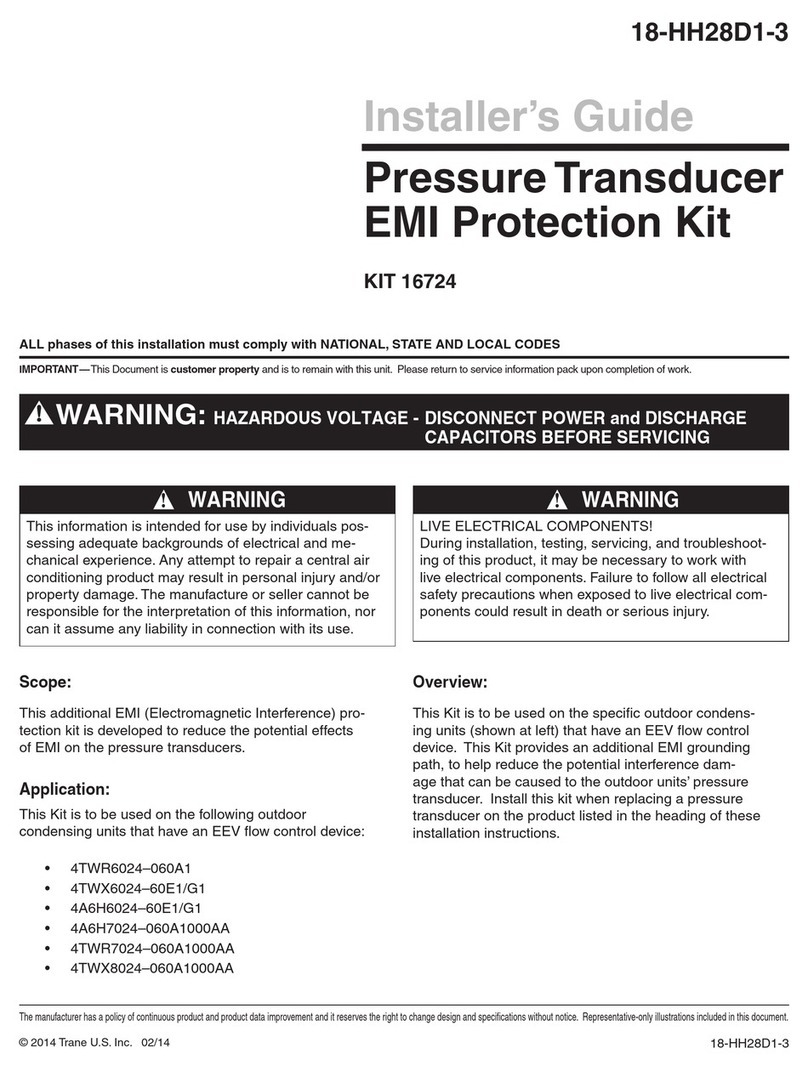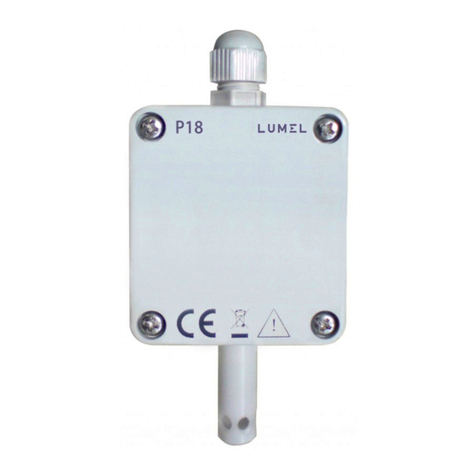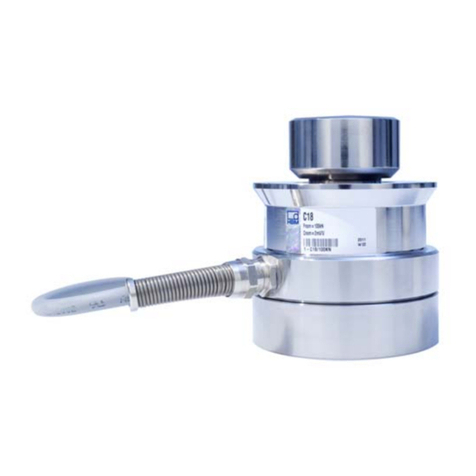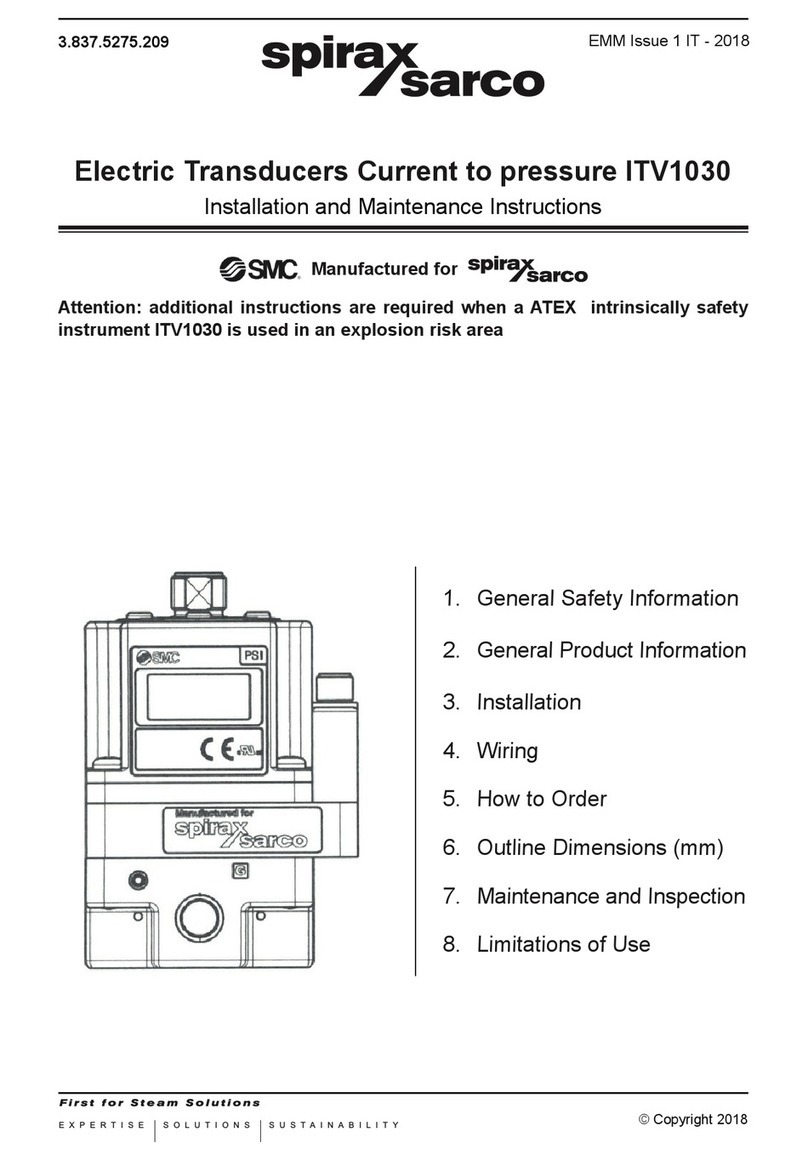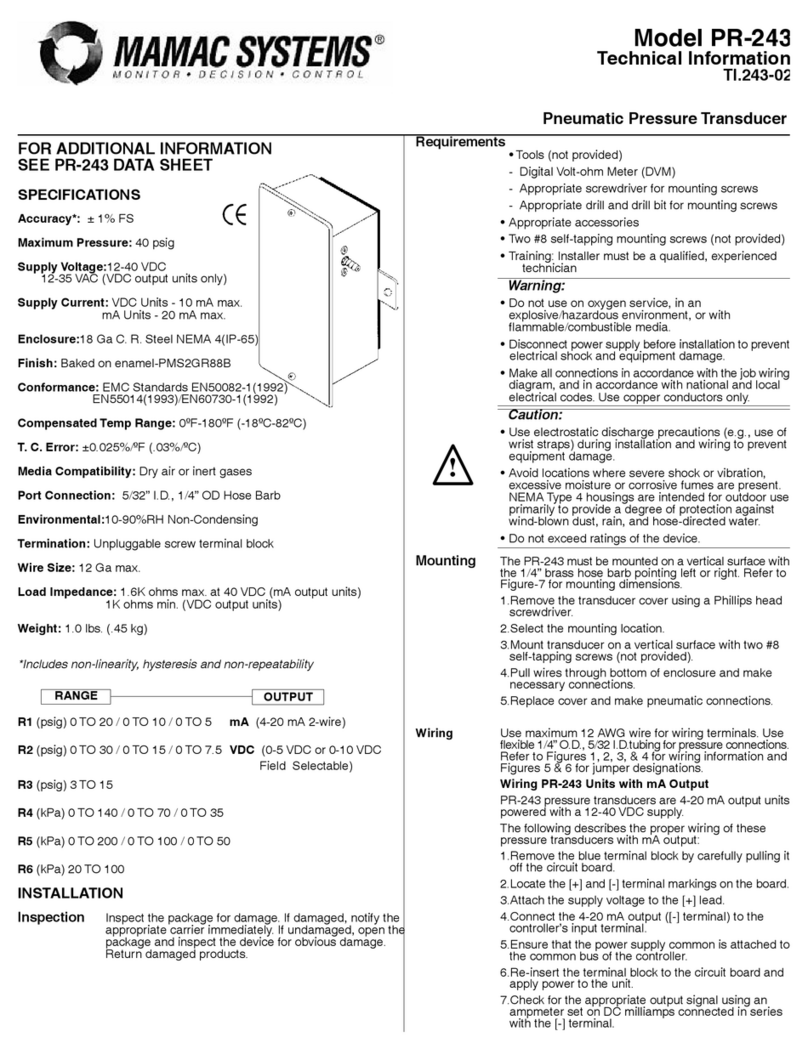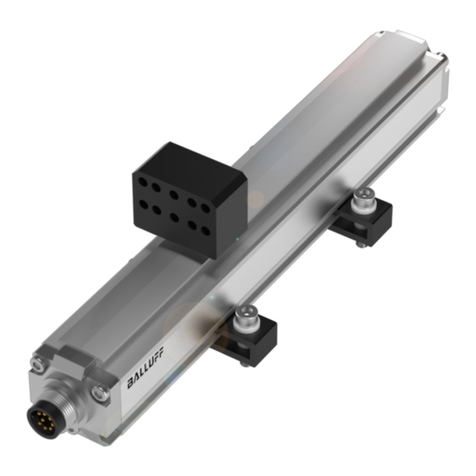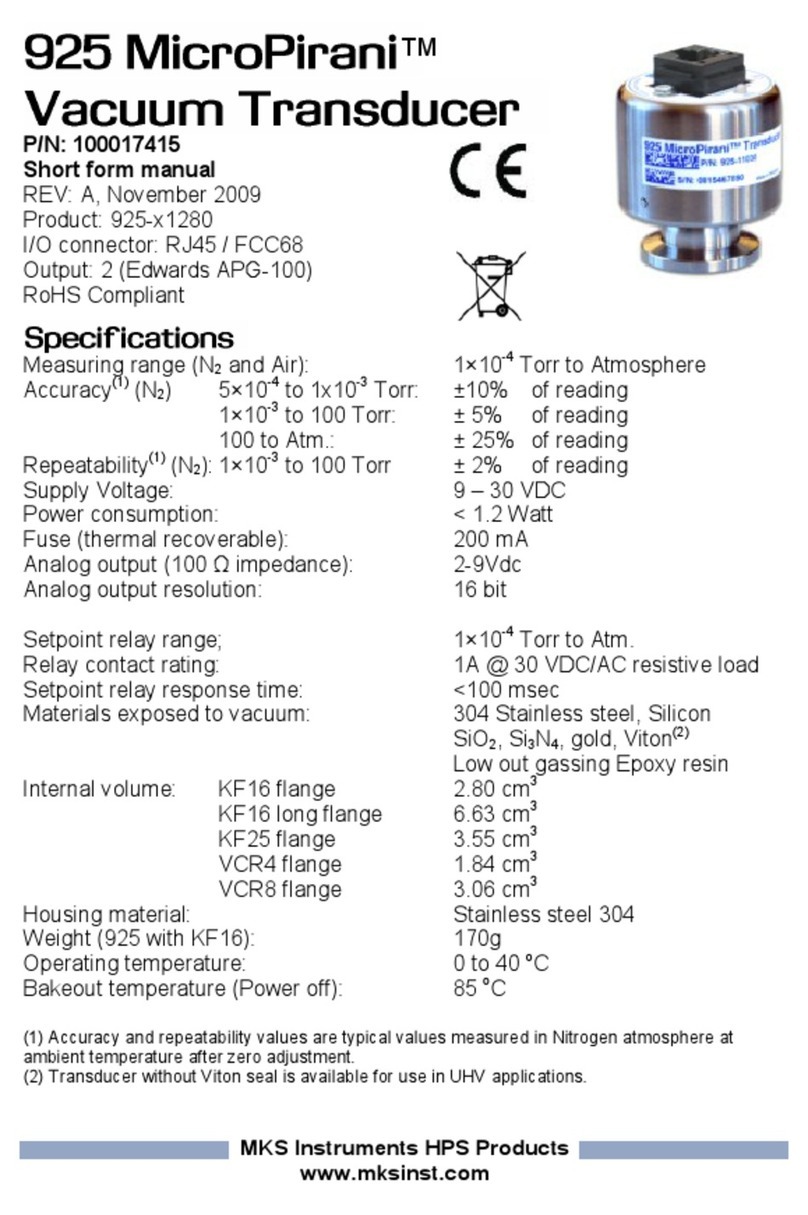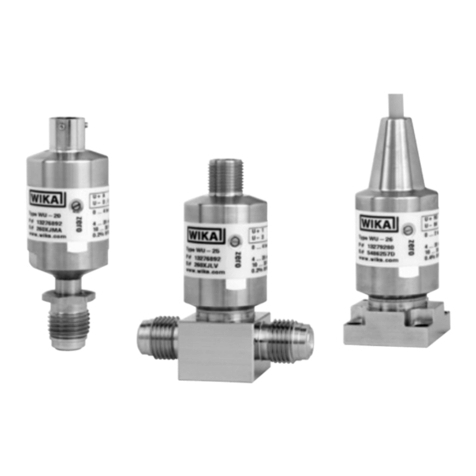CT-600/CT-1000 User’s Manual
9
1.Introduction
This chapter describes the general characteristics and main features of the <
current transducers.
1.1 <Current Transducers Overview
The < current transducers family is based on a closed loop technology that
allows accurate and precise monitoring of DC and AC currents with high bandwidth.
Main characteristics of the entire <family are negligible temperature
coefficient, excellent linearity and extremely low noise.
The transducers CT-Series family has a transform ratio between primary and
secondary. The transform ratio value depends over the CT-Series model. External
plastic casing guarantees galvanic isolation between the primary and the secondary
circuits in order to allow to current measurements at a different potential and simplifies
interfacing when using the < , as the feedback element of current regulated power
supplies. The internal conductive casing guarantees higher noise immunity and reduces
undesired noise pick-up from external sources.
DC current transformers and transducers represent the ideal replacement for
systems where Hall-effect sensors or shunt resistors are used as current sensing
elements and better performances are needed.
Main application fields for these current transducers are precise and extremely
stable regulated power supplies and power inverters.
Due to the excellent characteristics, the < transformers can be used in a
variety of calibration, acceptance testing and quality control applications in the
industrial and automotive fields.
